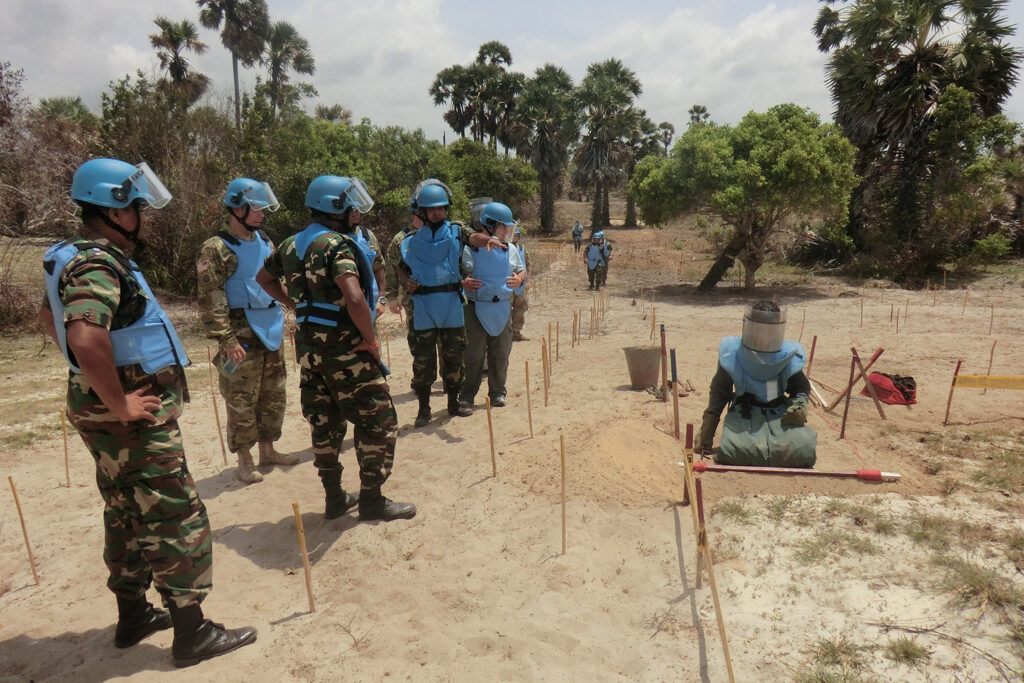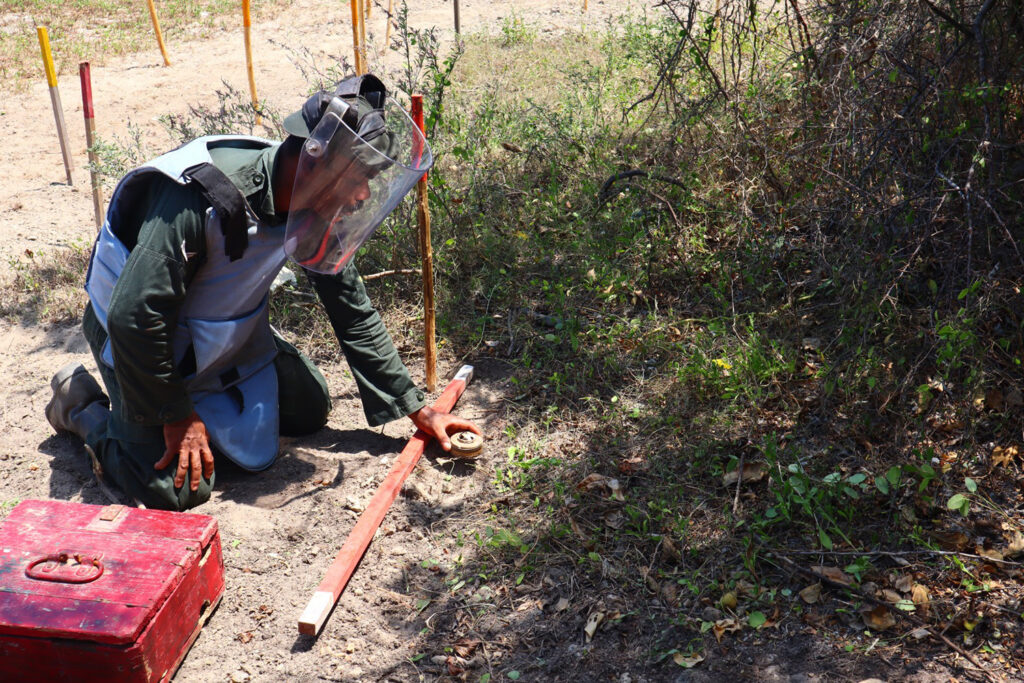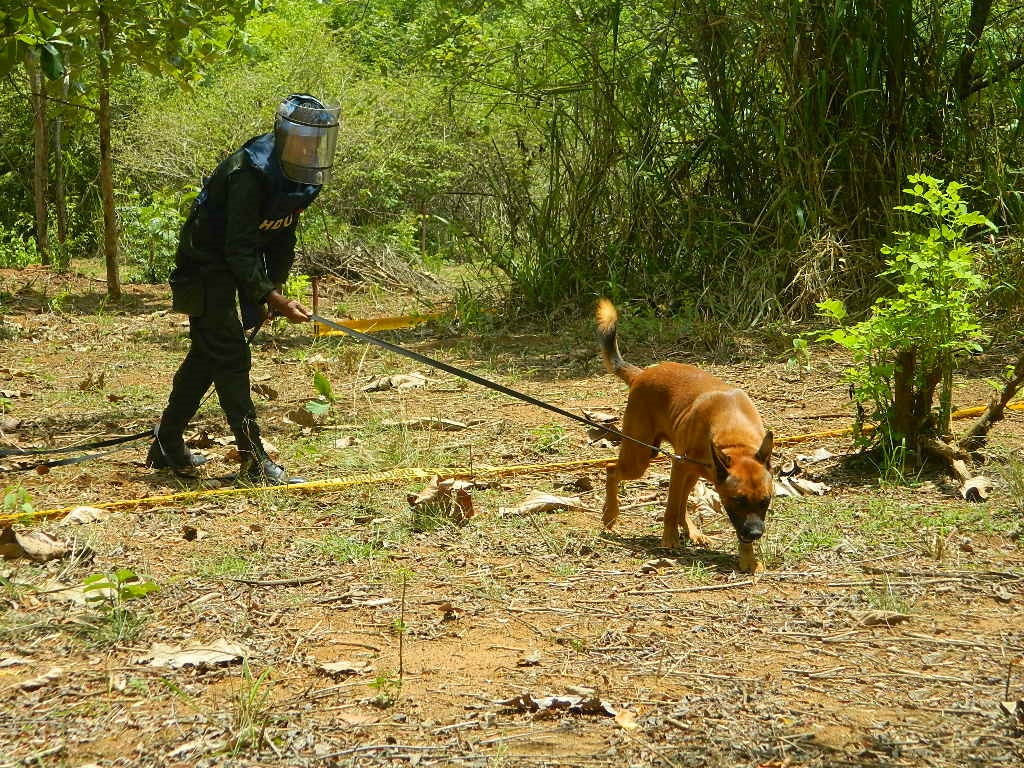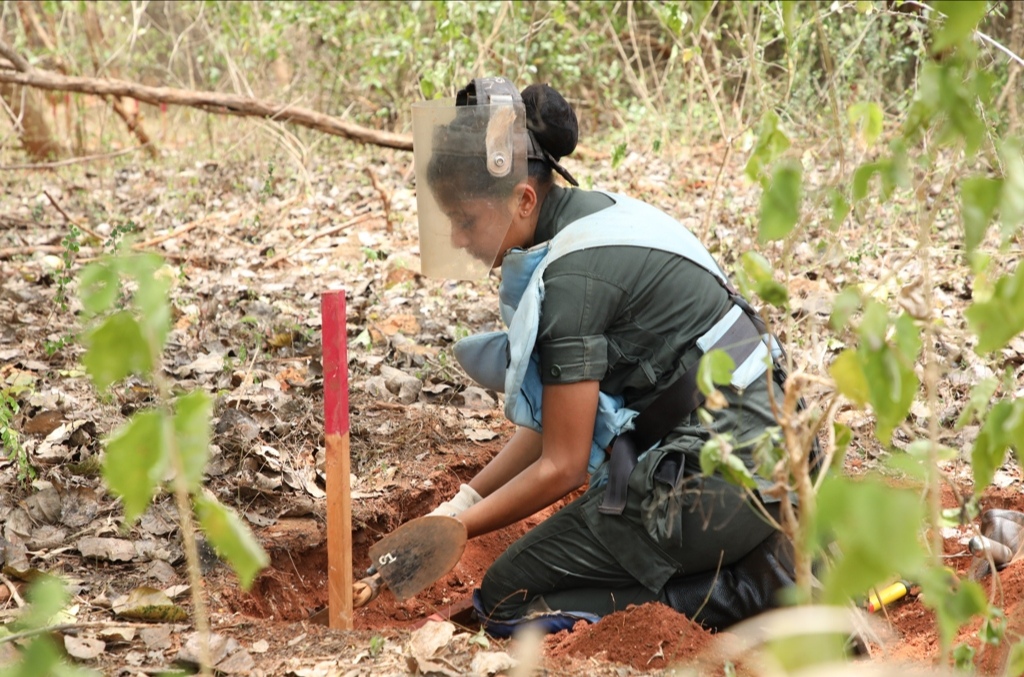Role and Operations
With coordination and management support of the United Nations Development Programme (UNDP), Sri Lanka’s mine action programme was first established in 2002.
Sri Lanka’s Cabinet officially approved the establishment of NMAC in 2010, resulting in the programme’s transition from UNDP-management to full national ownership.
Since then, NMAC has been housed within several different ministries and is currently placed within the Resettlement Division of the Ministry of Urban Development and Housing , with the Secretary serving as NMAC’s Director.


NMAC collaborates with two international operators, Mines Advisory Group (MAG) and the HALO Trust , along with two national operators, Delvon Assistance for Social Harmony (DASH) and Skavita Humanitarian Assistance and Relief Project (SHARP) and the Sri Lankan Army – Humanitarian Demining Unit (SLA-HDU) to identify and clear explosive ordnance (EO) and deliver explosive ordnance risk education (EORE) in line with international mine action standards (IMAS).
This work is made possible through funding from the Government of Sri Lanka and several international donors, including Australia, Canada, Germany, Japan, Norway, the European Union, the United Kingdom, Switzerland, the United States, and the Swiss-based foundation World Without Mines.
In February 2024, the Cabinet of Ministers approved the extension of the National Mine Action Centre’s mandate until 2027 to oversee and direct mine clearance activities nationwide, reflecting Sri Lanka’s commitment to achieving mine-free status by 2027.
In addition, NMAC is committed to facilitating the successful transitioning process of deminers into alternative employment opportunities upon the completion of clearance.


The NMAC Office is situated on the 5th floor of Sethsiripaya Stage 1 in Battaramulla.
The Regional Mine Action Office (RMAO) is based in Kilinochchi and is responsible for coordinating, tasking and conducting quality management (QM) and information management.
NMAC and RMAO work closely with District Steering Committees for Mine Action, which are chaired by Government Agents (GAs), who head government district authorities.
NMAC currently benefits from the support of two additional resources:
A Livelihood Consultant from MAG, seconded to NMAC to support the implementation of Strategic Objective 4 “Staff Transition” of the National Mine Action Completion Strategy 2023-2027.
An Information Management (IM) Specialist from GICHD, working to strengthen the national Information Management System for Mine Action (IMSMA) database, aligning with Strategic Objective 1 “Land Release and EORE” of the National Strategy.
